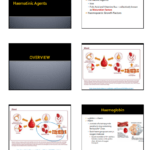PPH 308: MEDICINAL CHEMISTRY-II
Presentation · March 2018
CITATIONS READS
0 5,646
1 author:
Dr Sumanta Mondal
GITAM (Deemed to be University)
271 PUBLICATIONS 587 CITATIONS
SEE PROFILE
Some of the authors of this publication are also working on these related projects:
SARS-CoV-2 View project
“TEXTBOOKS” are produced to meet the needs of educators. View project
All content following this page was uploaded by Dr Sumanta Mondal on 05 March 2018.
The user has requested enhancement of the downloaded file.
PPH 308: MEDICINAL CHEMISTRY – II Unit: IV: Antifungal agents
Antifungal agents: Synthesis of Griseofulvin, Fluconazole.
– Fungal infections are caused by microscopic organisms that can invade the epithelial tissue.
– The fungal kingdom includes yeasts, molds, rusts and mushrooms. Fungi, like animals, are hetrotrophic, that is,
they obtain nutrients from the environment, not from endogenous sources (like plants with photosynthesis).
– Most fungi are beneficial and are involved in biodegradation; however, a few can cause opportunistic infections if
they are introduced into the skin through wounds, or into the lungs and nasal passages if inhaled.
– Diseases caused by fungi include superficial infections of the skin by dermatophytes in the Microsporum,
Trichophyton or Epidermophyton genera. These dermophytic infections are named for the site of infection rather
than the causative organism.
Dermophytic Infection Causative Organism
Tinea corporis (ringworm) Microsporum canis, Trichophyton mentagrophytes
Tinea pedis (athlete’s foot) T. rubrum, T. mentagrophytes, Epidermophyton floccosum
Tinea cruis (jock itch) T. rubrum, T. mentagrophytes, E. floccosum
Tinea capis (scalp) M. canis T. tonsurans
Tinea barbae (beard/hair) T. rubrum, T. mentagrophytes
Tinea unguium (nails) T. rubrum, T. mentagrophytes, E. floccosum
– Systemic infections are caused by the inhalation of spores and cause fungal pneumonia. This pneumonia cannot be
transmitted from human to human. These infections can occur in otherwise healthy individuals. Many of the
organisms that cause systemic fungal infections are confined to specific geographic locations due to favorable
climates for their proliferation.
Systemic Infections Causative Organism Geographic Location
Coccidioidomycosis Cocidioides immitis Southwestern U.S. and parts of Latin America
Histoplasmosis Histoplasma capsulatum Central and Eastern U.S
Brazilian Blastomycosis Paracoccidioides brasiliensis South America
Blastomycosis Blastomyces dermatitidis Southeastern U.S. and Mississippi River valley
– Organisms that cause opportunistic infections will not gain a foothold in healthy individuals, but in the
immunocompromised they can cause serious, sometimes life-threatening infections. Patients especially susceptible
to these infections include individuals with leukemia and other blood diseases, cancer, HIV and other
immunodeficiencies, and diabetes. These organisms can be found throughout the U.S.
Systemic Infections Causative Organism Geographic Location
Candidaisis, Thrush, Vulvovaginitis Candida albicans GI tract and vagina
Through inhalation, may cause mild
Cryptococcal meningitis Cryptococcus neoformans
lung infection. Mainly affects CNS
Aspergillosis Aspergillus sp. Lung, brain, sinuses and other organs
Mucormycosis Murcor sp. Sinuses, eyes, blood and brain
Lungs (especially prevalent in HIV
Pneumocystis carinii pneumonia Pneumocystis carinii
patients)
th
Lecturer Notes_Dr. S. Mondal_B. Pharm 6 Semester_GITAM (Deemed to be University) Page | 1
E-mail: [email protected]
PPH 308: MEDICINAL CHEMISTRY – II Unit: IV: Antifungal agents
Chemical Classification of Anti-fungal agents
Antibiotics Amphotericin B, Nystatin, Griseofulvin
Triazoles Fluconazole, Itraconzole, Terconazole
Imidazoles Clotrimazole, Ketoconazole, Miconazole, Bifonazole, Butoconazole, Zinoconazole
Fluorinated pyrimidines Flucytosine
Chitin synthetase inhibitors Nikomycin Z
Peptides/proteins Cispentacin
Miscellaneous Ciclopirox, Tolnaftate, Naftifine, and Terbinafine
Griseofulvin Fluconazole
Clotrimazole Flucytosine
Nikomycin Z Cispentacin
Ciclopirox
Classification Based on the Route of Administration
– Drugs for subcutaneous and systemic mycoses: Amphotericin B, Fluconazole, Flucytosine, Itraconazole,
Ketoconazole.
– Drugs for superficial mycoses: Clotrimazole, Econazole, Griseofluvin, Miconazole, Nystatin.
th
Lecturer Notes_Dr. S. Mondal_B. Pharm 6 Semester_GITAM (Deemed to be University) Page | 2
E-mail: [email protected]
PPH 308: MEDICINAL CHEMISTRY – II Unit: IV: Antifungal agents
Griseofulvin
Synthesis
th
Lecturer Notes_Dr. S. Mondal_B. Pharm 6 Semester_GITAM (Deemed to be University) Page | 3
E-mail: [email protected]
PPH 308: MEDICINAL CHEMISTRY – II Unit: IV: Antifungal agents
Mode of action
– Griseofulvin is a fungi-static drug that causes disruption of the mitotic spindle by interacting with polymerized
microtubules.
Dose
– As an oral suspension, the administered dose is 125 mg/5 ml; as capsules, 250 or 500 mg as tablets. For adults, in
divided doses, the dose is 500 mg/day.
General Mechanism action of Antifungal agents
th
Lecturer Notes_Dr. S. Mondal_B. Pharm 6 Semester_GITAM (Deemed to be University) Page | 4
E-mail: [email protected]
PPH 308: MEDICINAL CHEMISTRY – II Unit: IV: Antifungal agents
Fluconazole
Synthesis
Dose
– The administered dose for superfi cial mucosal candidiasis for adults is 50 mg daily, which is increased to 100 mg
daily.
– Recommended treatment duration is 7–14 days; in the case of oropharyngeal candidiasis, 14 days for atrophic oral
candidiasis associated with dentures, 14–30 days for other mucosal candidal infections, including oesophagitis.
– In the case of children, more than 4 weeks the loading dose is 6 mg/kg followed by 3 mg/kg daily.
– The administered dose for dermatophytosis, pityriasis versicolor, and candida infections for adults is 50 mg daily
for up to 6 weeks.
th
Lecturer Notes_Dr. S. Mondal_B. Pharm 6 Semester_GITAM (Deemed to be University) Page | 5
E-mail: [email protected]
View publication stats










